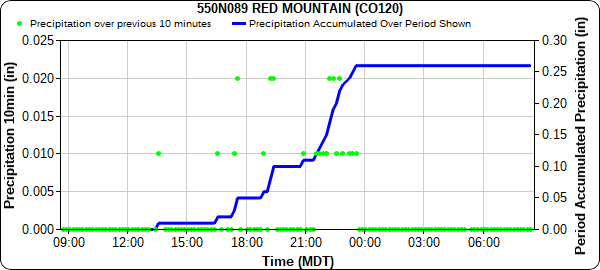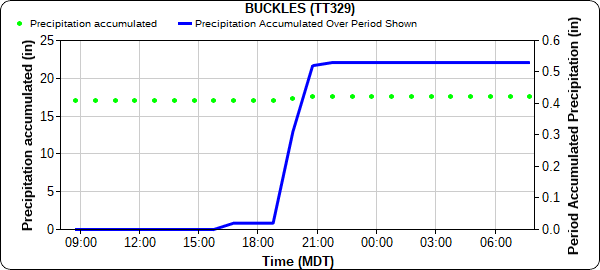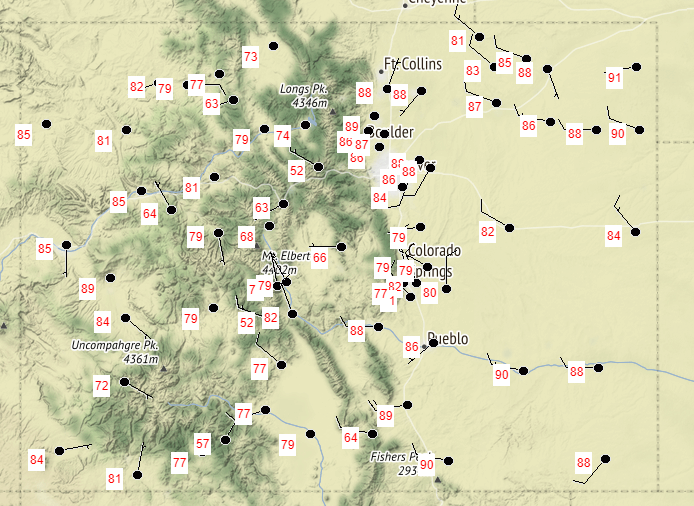Issue Date: Tuesday, September 28th, 2021
Issue Time: 10:30 AM MDT
Summary:
The cutoff low traversing Arizona and New Mexico continued to bring late season monsoonal moisture to Southwest Colorado yesterday. There were already showers along the Colorado-New Mexico border in the in the early morning hours. The general eastward progression of the low and daytime heating then allowed for scattered, but more widespread, storm development over the Southwest Slope, San Juan Mountains, Southeast Mountains, even inching up toward the Central Mountains and southern portion of the Front Range Mountains. Showers and thunderstorms lasted well into the evening hours and overnight, however rainfall rates and total accumulation remained low enough to prevent flooding.
The following hyetograph from Red Mountain, a gauge managed by CDOT, shows the day’s steady rainfall beginning in the afternoon and continuing until just before midnight, with total of 0.26 inches of rain. Other notable totals from CoCoRaHS observers and gauges in Southwest Colorado include:
Other notable totals from CoCoRaHS observers and gauges in Southwest Colorado include:
- 0.52 north of Durango
- 0.52 from a USGS gauge at Mancos River near Towaoc, just north of New Mexico border
- 0.14-0.50 in the Mancos, Dolores, Cortez region of Montezuma County
- 0.18-0.46 across Saguache county
- 0.35 in Pagosa Springs
- Even Trace-0.11 in southwest Colorado Springs and 0.05-0.10 in the San Luis Valley.
For the rest of the state, the day remained dry and unseasonably warm. Highs were in the 80s and 90s across the Grand Valley, Northwest Slope, Urban Corridor, Palmer Ridge, Raton Ridge, and Eastern Plains. The Ptarmigan Fire was ignited yesterday afternoon in Summit County. The White River National Forest twitter account shared the following image of the fire above Silverthorne yesterday. Since the time of the tweet, the fire has expanded to burn around 40 acres.
Forest Service and local cooperator crews are responding to the #PtarmiganFire north of Silverthorne. It’s currently estimated to be 2 acres. A heavy helicopter and 2 Single Engine Air Tankers (SEATS) are en route. More information will be posted as it becomes available. pic.twitter.com/fa1gQZPH1T
— White River National Forest (@WhiteRiverNews) September 28, 2021
No flooding was reported on Monday. For rainfall estimates in your area, check out the State Precipitation Map below.
Click Here For Map Overview





